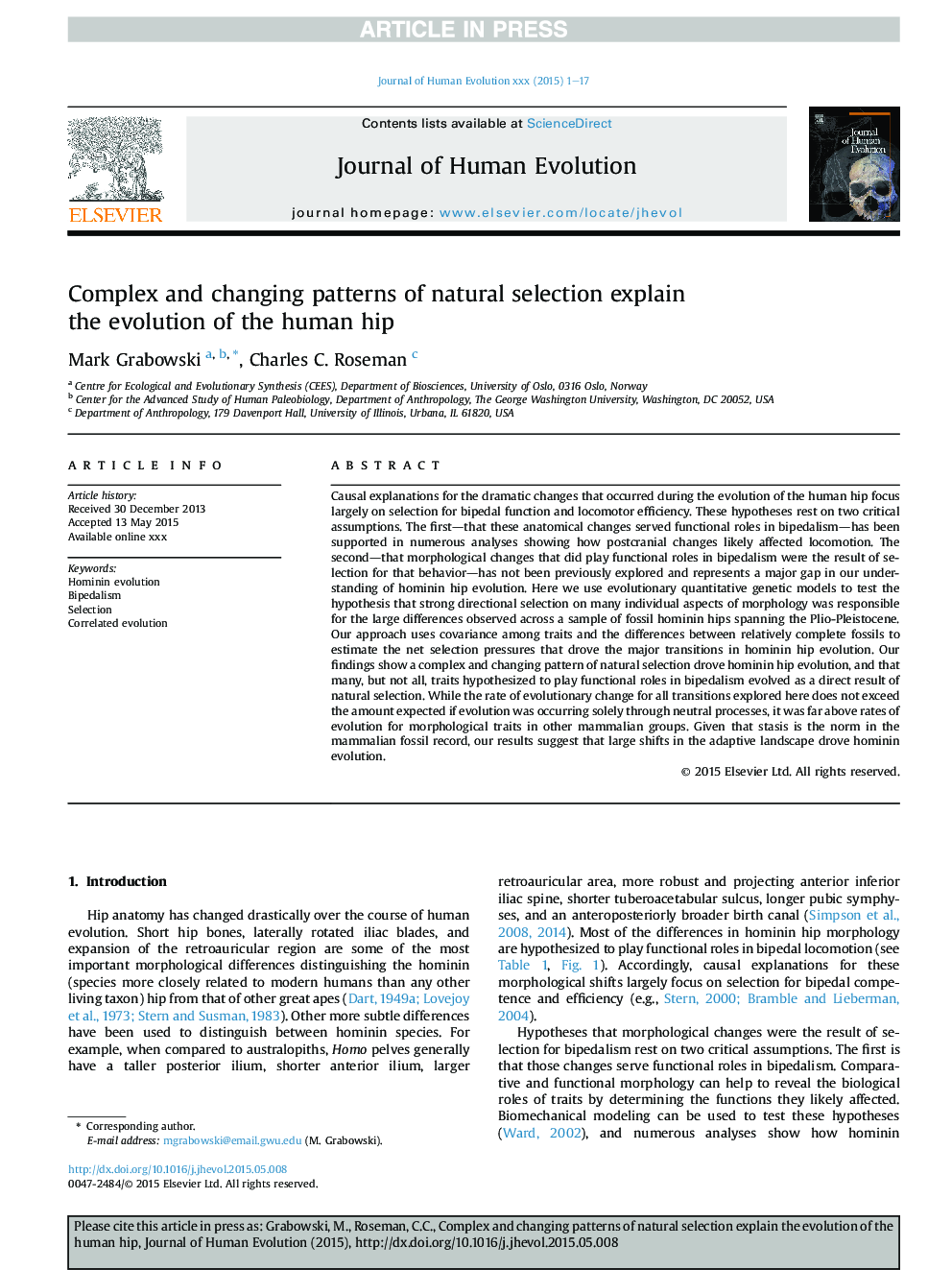| Article ID | Journal | Published Year | Pages | File Type |
|---|---|---|---|---|
| 6389146 | Journal of Human Evolution | 2015 | 17 Pages |
Abstract
Causal explanations for the dramatic changes that occurred during the evolution of the human hip focus largely on selection for bipedal function and locomotor efficiency. These hypotheses rest on two critical assumptions. The first-that these anatomical changes served functional roles in bipedalism-has been supported in numerous analyses showing how postcranial changes likely affected locomotion. The second-that morphological changes that did play functional roles in bipedalism were the result of selection for that behavior-has not been previously explored and represents a major gap in our understanding of hominin hip evolution. Here we use evolutionary quantitative genetic models to test the hypothesis that strong directional selection on many individual aspects of morphology was responsible for the large differences observed across a sample of fossil hominin hips spanning the Plio-Pleistocene. Our approach uses covariance among traits and the differences between relatively complete fossils to estimate the net selection pressures that drove the major transitions in hominin hip evolution. Our findings show a complex and changing pattern of natural selection drove hominin hip evolution, and that many, but not all, traits hypothesized to play functional roles in bipedalism evolved as a direct result of natural selection. While the rate of evolutionary change for all transitions explored here does not exceed the amount expected if evolution was occurring solely through neutral processes, it was far above rates of evolution for morphological traits in other mammalian groups. Given that stasis is the norm in the mammalian fossil record, our results suggest that large shifts in the adaptive landscape drove hominin evolution.
Related Topics
Life Sciences
Agricultural and Biological Sciences
Ecology, Evolution, Behavior and Systematics
Authors
Mark Grabowski, Charles C. Roseman,
